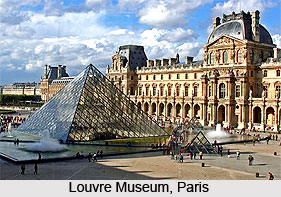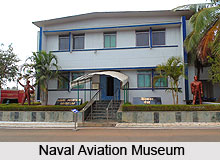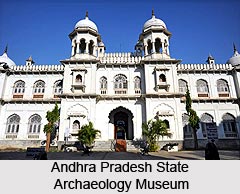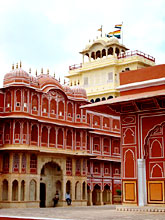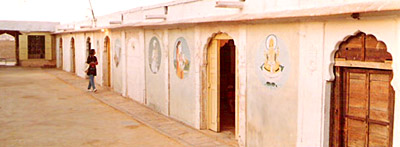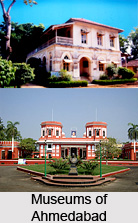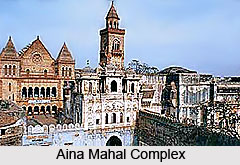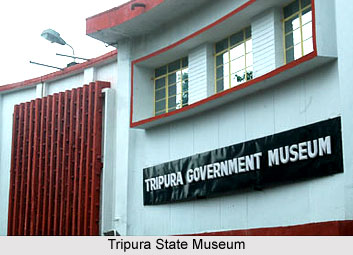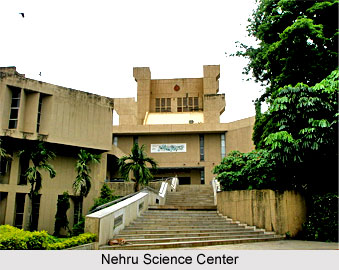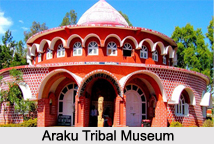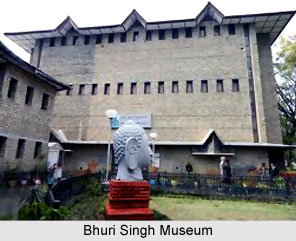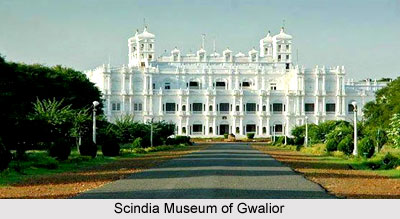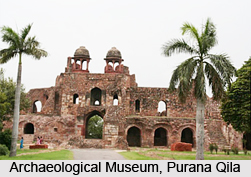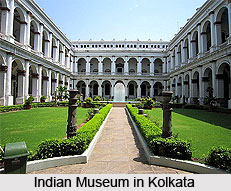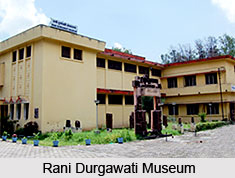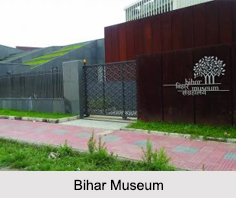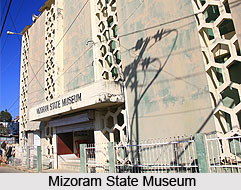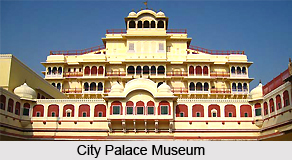 Rajasthan is a north-western state of India, where the tales of the erstwhile maharajas and maharanis are common. Stories of chivalry, sacrifice, romance and pride are the common folklore of Rajasthan. The striking architectural wonders still stand in silent witness to the glory of the previous generations. The demonstration of beauty in the Museums of Rajasthan is clearly evident from the wide ranging arts and crafts, the daily use domestic items and the symbols of Rajput warriors, such as, knives and swords. In present times, in the Museums of Rajasthan, these enchanting works of art hang on the delicately carved walls of the massive museums, which preserve the valuables of the past.
Rajasthan is a north-western state of India, where the tales of the erstwhile maharajas and maharanis are common. Stories of chivalry, sacrifice, romance and pride are the common folklore of Rajasthan. The striking architectural wonders still stand in silent witness to the glory of the previous generations. The demonstration of beauty in the Museums of Rajasthan is clearly evident from the wide ranging arts and crafts, the daily use domestic items and the symbols of Rajput warriors, such as, knives and swords. In present times, in the Museums of Rajasthan, these enchanting works of art hang on the delicately carved walls of the massive museums, which preserve the valuables of the past.
City Palace Museum of Jaipur
City Palace Museum is one of the famous museums in Rajasthan situated within the Jaipur city palace complex and it lies in the middle of temples, old buildings and the palace quarters. Maharaja Sawai Man Singh II laid the foundation of this museum in the year 1959. The contents of this museum include the ancestral compilation built up by the consecutive rulers of Jaipur and Ajmer. Some of the paintings, maps, manuscripts, textiles, carpets, costumes, armors and weapons were exhibited in the Silehkhana or armory and the Pothikhana (library). The Art Gallery is accommodated in the Diwan-i-Aam; build for organizing vital state functions. A range of illustrated manuscripts, objects-miniature paintings, decorated book covers, old printed books, palm-leaf and Sanchipat manuscripts, gigantic Mughal carpets, covered Ambabadis and open Howdahs, gold and silver Takhis-Rawan (movable throne), palanquins and carriages with velvet coverings being luxuriously embroidered are exhibited in this gallery. There are exceptional animal and bird studies by Ustad Mansur in the museum, along with battle scenes, court scenes, mythological paintings and portraits by well-known Mughal painters. A velvet throne carpet with gold brocades having seal marks and notes dated 1605 A.D., two elegantly embroidered curtains of window dating back to the middle parts of the seventeenth century and a delicately woven silk and gold circular Thal-Posh (dish cover) from the seventeenth century are some of the other valuable things to be seen in the museum. 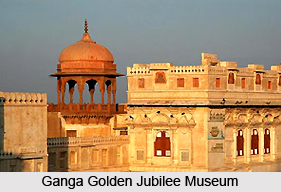
Museums of Ajmer
The large chain of museums in a number of big and small towns in Rajasthan and the newly opened art galleries and museums in the palaces of former rulers of old states and archaeological sites offer a helping hand in preserving the rich heritage of the state. The most-renowned museum in Rajasthan is the Ajmer Government Museum. This museum is located in the fort built by Mughal emperor, Akbar. This museum was established in the year 1908 by Lord Curzon and John Marshal, the Director General of Archaeological Survey of India. The major things to see in this museum are sculptures, epigraphs, arms and weapons. A library attached to the museum contains historical publications and rare books. Ajmer is a city of Rajasthan possessing a large number of tombs and forts portraying the Mughal architectural style, particularly the writings on the memorials, which are of enormous historical importance. Ajmer Government Museum is positioned in the central parts of the city of Ajmer and it is also in close proximity to the railway station. This is the place where Emperor Jahangir got to meet the British envoy Sir Thomas Roe for the first time in 1616. Subsequent to the British occupation in the year 1818 and at the time of the first war of Independence in the year 1857, this museum was utilized by the British as the Rajputana Arsenal. Another famous museum in Rajasthan is the Archaeological Museum in Ajmer. It is situated in the Dil-e-Aaram Gardens. In July 1949, an entire collection was relocated to Dil-e-Aaram Garden, a part of the old palace at Amer. An Art Gallery was inaugurated in 1992 in this complex. An important fact about this museum is that it is divided into three sections.
Museums of Bikaner
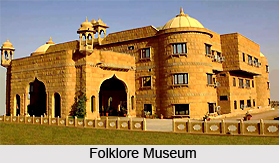 Bikaner is among the famous places in Rajasthan known for the presence of some of the beautiful museums like the Fort Museum at Junagarh Fort. This Fort Museum holds an excellent collection of traditional Rajput weaponry, camel hide, jade handle daggers, camel guns and inlaid handguns. Silver and gold howdahs, kis, jhulas and a First World War biplane can also be seen here. The photographs and objects of personal use by Maharaja Ganga Singh are on display. Ganga Golden Jubilee Museum in Rajasthan is an addition to the royal heritage of the state. The major attractions here are Arts and Crafts section, Maharaja Ganga Singh Memorial, terracotta and bronze armory, sculpture, folk-arts and miniature paintings sections.
Bikaner is among the famous places in Rajasthan known for the presence of some of the beautiful museums like the Fort Museum at Junagarh Fort. This Fort Museum holds an excellent collection of traditional Rajput weaponry, camel hide, jade handle daggers, camel guns and inlaid handguns. Silver and gold howdahs, kis, jhulas and a First World War biplane can also be seen here. The photographs and objects of personal use by Maharaja Ganga Singh are on display. Ganga Golden Jubilee Museum in Rajasthan is an addition to the royal heritage of the state. The major attractions here are Arts and Crafts section, Maharaja Ganga Singh Memorial, terracotta and bronze armory, sculpture, folk-arts and miniature paintings sections.
Other Museums of Rajasthan
For the people having interest in tradition and folk culture of Rajasthan, the Folklore Museum at Jaisalmer is worth visiting. Indian government has also contributed a lot in preserving some of the ancient riches of the state. A few of them are the Government Museums in Ajmer, Jodhpur, Alwar, Mount Abu, Jaisalmer, Kota, Bangar, Jhalawar, Mandore and Udaipur. Other museums in Rajasthan include Archaeological Museum, Udaipur; Archaeological Museum, Ganganagar, Danmal Mathur Museum, Ajmer; Govenment Museum, Kota, Government Museum, Alwar; Government Museum, Bharatpur; Government Museum, Jodhpur; Government Museum, Mandore; Government Museum And Palace, Amber; Jaigarh Fort Museum, Amber; Mehrangarh Museum, Jodhpur; Museum And Saraswati Bhandar, Kota; Sir Chhotto Ram Memorial Museum, Sangaria; Umaid Bhawan Palace Museum, Jodhpur; Birla Museum, Jhunjhunu; Botanical Museum, Jodhpur; Government Central Museum, Jaipur; Government Museum, Bikaner; Government Museum, Jhalawar; Government Museum, Mount Abu; Government Museum, Udaipur; Maulana Abul Kalam Azad Arabic Persian Research Institute of Tonk; Rajputana Museum, Ajmer; S.R.C. Museum Of Indology and University Institute of Orientology, Jaipur and others.
Rajasthan, with its vast array of historical places, forts, museums is a much favored tourist destination of India. The images of various art and craft works, daily use items and the weapons used by the Rajputs add to the beauty of the Museums of Rajasthan. With the initiative of the Government of India and some private organizations, the rich culture and tradition of Rajasthan has been preserved in the huge network of museums.
